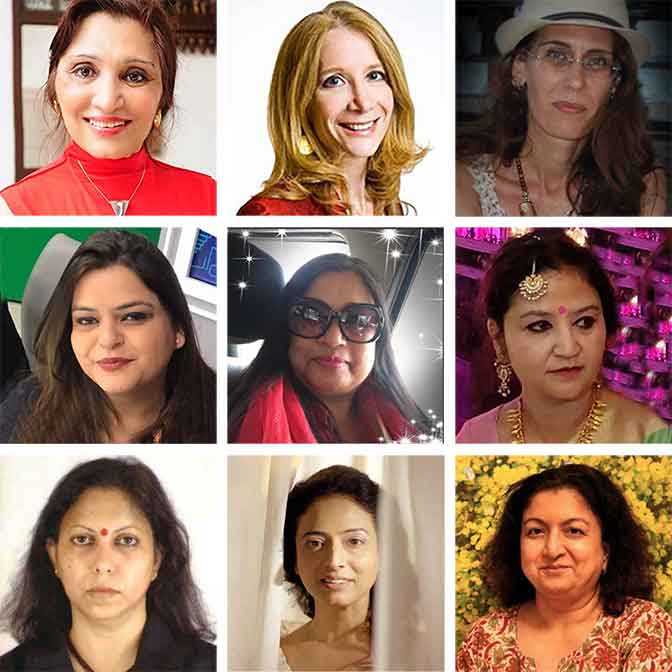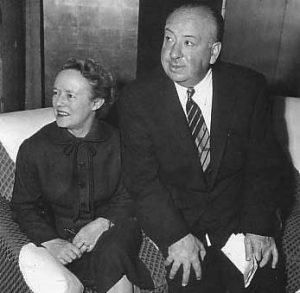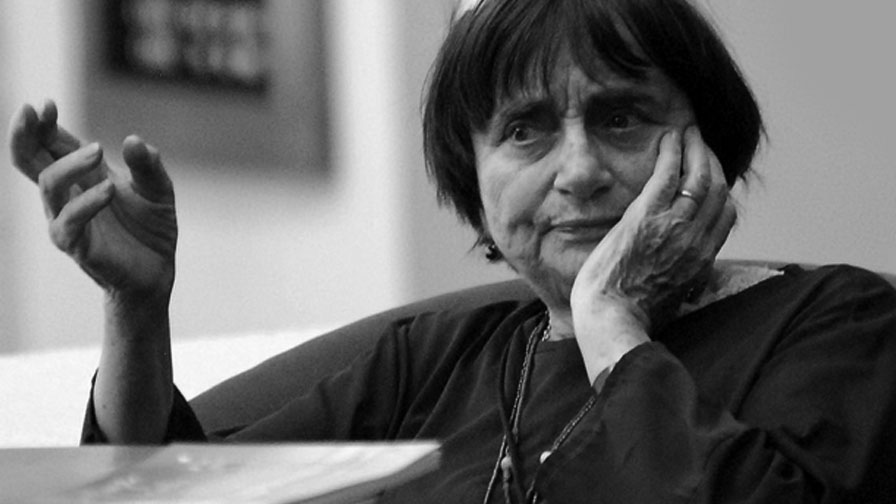The encyclopaedia of art is conspicuous by the absence of even a passing mention to several notable women artists. ‘Far too often, women’s achievements have been ignored, underreported, or simply erased from the historical record… While this erasure is frustrating and harmful, creating a false myth that women’s history lacks great creative and intellectual achievement, it’s even more maddening to find instances in which women’s accomplishments have been stripped from them… men deliberately stole credit for women’s work.’[1]
[highlight background=”#f79126″ color=”#ffffff”]Hollywood may have, once upon a time, installed DW Griffith on a pedestal and proclaimed him as its cinematic father, but long before he had seen his first camera, Alice Guy, a ‘Paris-born pioneer was laying the groundwork for narrative film’s visual language… She was one of the first to employ ground-breaking techniques[/highlight] like the split screen, double exposure, and film tied to sound. She’s also been credited with inventing the close-up (an honor popularly but mistakenly bestowed to Griffith).’[2] Hers is anything but a freak, isolated case. Dorothy Arzner pioneered the concept of the boom mic. And Margaret Booth was ‘a pioneer of the classic editing style, the so-called “invisible cutting, the aim of which was to make the transition from one image to another as seamless as possible, so the audience was almost unaware of the flow of shots within a sequence… All the filmmakers had to go through her in order to have a final editing of sound and vision approved.’[3] [highlight background=”#f79126″ color=”#ffffff”]Alfred Hitchcock may have successfully demolished the studio system by wresting control over the post production, but it was his wife, Alma Reville, who was responsible for some of the iconic cuts. [/highlight]Although overshadowed by men, it has not stopped women from emerging from the darkness and creating and telling their stories. And the age of digital has made their job much easier. In this age of communication, video-sharing platforms and affordable tools and technology, women can create art and share their thoughts with the world with ease.
Women directors in the West and in most parts of Asia now possess the absolute power to challenge the male gaze and subvert traditional narrative storytelling and stereotypes. Their films can go a long way in empowering the feminist movement and creating a more equal world. A majority of the prevalent social issues in India are female centered. Thus, such films are a highly necessitated stepping stone to radical change. [highlight background=”#f79126″ color=”#ffffff”](Shalini Shah)[/highlight][4]
As millennial and Gen Z girls/women are taking an active part in today’s workforce and becoming independent breadwinners, the focus of creating content for predominant male audiences has improved to include women audiences, with focus on real, relatable storylines. Sound-designer /filmmaker Lipika Singh Darai uses the craft of filmmaking to explore and tell the story of the lesser known side of India. She is the winner of four national film awards, and hails from a simple tribal community in Orissa.
Actresses too have contributed to the movement for equal status in the world of cinema. Be it Hema Malini or Waheeda Rehman, Vidya Balan, Nandita Das or Meryl Streep, they have held their own both in their choice of roles and in personal life. More important, their stance has earned them respect from both men and women. [highlight background=”#f79126″ color=”#ffffff”](Sathya Saran)[/highlight][5]
Streaming platform such as Netflix and Amazon Prime, with the intent of reaching out to more diverse groups with different voices unlike traditional media, have opened the gates for not just women-centric content but also content written and produced by women. Earlier women filmmakers were compelled to navigate through production houses and media executives, primarily men, but now that these streaming platforms have come into existence, independent women filmmakers can directly pitch their ideas. The rise in women-driven shows such as the Golden Globe Award winner, Fleabag, the Primetime Emmy Award winner Glow and many others have proved that there is a sizeable market potential for female-driven content.

There has been a major push too, in recent times, from festivals, organizations & governments for promoting hitch cinema. ‘Challenging filmmakers, producers and artists to create cinema that breaks the stereotypical portrayal of male and female characters in films,’[6] Oxfam India joined hands with the MAMI film festival in 2016 and every year since then sponsors the Best Film on Gender Equality Award. And in the South, the Kerala finance minister announced an allocation of Rs. 3 Crore for women filmmakers, stating that the ‘emergence of a women collective has been an important turning point in the struggle for gender equality in the Malayalam film world.’[7] Women in Cinema Collective (WCC) is a non-profit organization for women in Malayalam cinema, founded in 2017, ‘in response to the alleged sexual assault of a Malayalam actress… “The organisation will work for equal opportunity and dignity of women employees in the industry,” says Beena Paul, film editor and artistic director of IFFK, who heads it along with Manju Warrier, Parvathy Thiruvothu, Anjali Menon, Rima Kallingal, Sajitha Madathil, Vidhu Vincent and Deedi Damodaran. “The movement is a result of the discussions that has been happening among the women in Malayalam cinema over the past two months. We wanted to address the gender issues within the industry which include lack of security, basic facilities and to ensure women’s participation in the industry’s activities.”’[8]
This utopian vision of the film industry cannot be achieved in isolation with itself. Technology plays a crucial role in bringing everything together. Women in computer and information technology, digital development, mass media platforms along with filmmakers must come together to create digital platforms where women from all fields can unite, collaborate, and work together. Online platforms such as Film Freeway too has turned the process of submitting one’s films to film festivals into a fairly simple one. ‘Several film festivals are specifically focused on promoting female filmmakers, including the Cairo International Women’s Film Festival in Egypt, the Barcelona International Women’s Film Festival, the China Women’s Film Festival in Hong Kong, the Ndiva Women’s Film Festival in Ghana, and the Seoul International Women’s Film Festival in South Korea. In France, the organization Le Collectif 50/50 is working to ensure that male and female-directed films receive equal footing at all film festivals.’[9]
Technology must be employed to teach filmmaking as well as film studies to the masses who are in need. With privatization of national film schools and fee hikes, virtual film education will be an essential part. Platforms such as YouTube can be both for learning and sharing one’s film experiments with the world. Furthermore, female filmmakers are not just limited to filmmaking and technicians’ roles. Female film educationists also play a critical role in how young film students are exposed to cinema.
The history of film is partial to a patriarchal setup. The major innovations are named under men. Even though women were in the forefront of film evolution their names are sometimes sidelined. Thus, a female educationist with a keen eye can sometimes correct this by balancing this out and drawing attention to lesser known names who are equally important and need to be acknowledged for their contribution to cinema. Film education can be made more accessible if the government and film societies take the initiative to educate India about cinema through its media channels online and this could focus on bringing to light key women pioneers in cinema from India and worldwide. Today with the mobile phone every citizen is a potential filmmaker and thus more the responsibility to empower them and sensitize them to gender equality. [highlight background=”#f79126″ color=”#ffffff”](Oorvazi Irani)[/highlight][10]
There is much that can be learnt from female filmmakers of the classical era who were pioneers in film techniques. Emerging technologies allow young female filmmakers of today to experiment and radically push the boundaries. It has been more than a hundred years since the first film was made. With these fast-changing times, the possibility of inventing new narrative styles and ways of making films is in abundance. While a majority of the world focuses on recreating nostalgia and making film sequences, female filmmakers must make full use of the ample space and freedom to rethink ways of creating films, and reinventing cinema; because there simply are no rules.
An increase in open discourse and social media “reviewing”, like amateur and professional YouTube film & TV reviews, with their wider reach of audiences and opinion, have brought light to how women characters are represented in today’s films and TV shows. Preeti, character played by actress Kiara Advani in the heavily criticized and ultra-masculine T-series produced film, “Kabir Singh”, was turned into many memes and jokes elaborating on the character’s muteness throughout the film. The film itself was criticized for glorifying domestic abuse. Ironically, “Thappad”, a female-centric movie tackling domestic abuse, which came out just few months after Kabir Singh, was also produced by the same T-Series. In recent years, there has been a rise in feminist advertisements, the Indian film industry and mass media sees post-feminism as a huge business opportunity and exploits it to the fullest in this age of viral video consumption. First appeared in 1985, the Bechdel test, named after American cartoonist Alison Bechdel, and its derivatives, used as a measure of the representation of women in fiction and indicator for the active presence of women in the entire field of film and other fiction, has helped bring light to gender inequality in fiction. Media industry studies have indicated that films that pass the test perform better financially than those do not. What women filmmakers have to determine is whether they just want to be a part of this passing fad or are here to tell authentic stories. Women filmmakers have the tremendous opportunity and responsibility to create content that not just addresses but also transcends.
Throughout history, female experience has been filtered through the male gaze. It is important that female writers tell their own story. Women must take charge of their own story, looking past mansplaining. The female-centric film is considered niche cinema. There is no reason as to why it cannot be projected on par with other male-centric mainstream commercial films. Audience support is very important. They play a major role in dictating what kind of films are being produced. The more that audience supports female-centric films, the more such films will be made. [highlight background=”#f79126″ color=”#ffffff”](Advaita Kala)[/highlight][11]
Women filmmakers not only tell stories from a different perspective but also communicate empathy. The advent of the internet and information technology has ensured the rise of many women directors from urban and rural areas. Diversity in Filmmakers and storytellers from different genders and background bring richness and innovation to cinema that is most often homogeneous in nature. This homogeneity brings much needed authenticity and unique experiences to the screen, and makes a cultural impact in the regional films of India.
Obviously, anything created by a woman be it a film or a novel or a painting would always come from a unique dimension that will bear all the gender specific characteristics. When we talk of these characteristics in films, sometimes, they are very subtle, like in all of Rima Das’ films. If you see, although the issues are universal, she is exploring them through a female protagonist. Replace the girl in Village Rockstar with a boy and you will have a completely different type of narrative. A boy who aspires to have a guitar will have different ways to expressing his desire and will resort to different means to achieve it. So, the entire narrative is bound to take a completely different course. That’s why whenever a female Director takes up a subject it will have a completely different cultural impact than that of a film directed by a male director. [highlight background=”#f79126″ color=”#ffffff”](Monita Borgohain)[/highlight][12]

Although there have been films that challenged the status quo which have been mostly pushed into obscurity, over the years, there has been a significant change in the way women are represented mainstream media. ‘As societies entered the world of modernization, the role of women changed dramatically… Films played an important part in portraying women in shifting roles over different decades and the impact it has had on societies in general.’[13] Looking at Indian cinema, earlier women characters were written to serve the male protagonists: a damsel in distress to be rescued by the hero. Then there are films that portray women as the good wife and mother, pushing forward the predominant female stereotype. Other prevailing trends such as the femme fatale in the film noir genre, and the heroine-vamp, enforced the idea that a woman can either be good or bad, and nothing more. This trend soon shifted to career-focused women characters. Not long after, the homemaker character returned to mainstream media. The advent of twenty-first century post-feminism, has given rise to a new kind of female characters, and successful award-winning women driven films and TV show. These new twenty-first century women characters focus on the relatable. These are women with flaws, vulnerability, and not without personal hardships. These characters carry forward the whole plot of a film or TV. One such examples is Queen (2014), which enjoyed a huge success with Indian audiences of all kinds.
Viewers are offered a change of perspective in Indian cinema so far dominated by male voices and gazes, a change which does not necessarily imply a feminine representation of the world but, importantly, a different approach and a different gaze, which takes into account a number of social, domestic, and cultural issues, generally overlooked or poorly represented. The courage of breaking conventions; the boldness of representation, of subverting gender and genre stereotypes, and of portraying real women instead of prototypes; the highlighting of gender inequality and the creation of self-awareness; and poetic sensitivity are a few of the qualities displayed in the texts produced by these women scriptwriters.[highlight background=”#f79126″ color=”#ffffff”](Daniela Rogobete)[/highlight][14]
Even with the social prejudice, there is a silver lining. Women filmmakers have the liberty to not only challenge the status quo but, as history has proved, to also bring a unique and rare perspective to cinema; which is what this art form is all about. This is an advantage of being from a minority gender. Filmmakers such as Lynne Ramsay, Chantal Akerman, and Andrea Arnold, to name a few, have reinvented ways of storytelling. Avant-garde female cinematographers such as Maya Deren, Akosua Adoma Owusu, Germaine Dulac and many more have experimented and produced some of the most ethereal films. ‘Known for making films that followed ‘rules of visual music,’ Dulac refused to adhere to narrative conventions that dominated in the late silent period, and instead… created some of the most influential works of the avant-garde movement ever recorded on celluloid.’[15] In India, 2018 belonged to women filmmakers. Village Rockstar’s won the Film Critics Circle of India Award for Best Film of 2018 and went on to bag 4 National Awards and travel as India’s official entry for the Oscars in the Best Foreign Language film category. It was written, directed, produced, cinematography and edited by Rima Das, who ‘is not professionally trained in any aspect of filmmaking.’[16]

There are very fewer women role models when compared to men in the film industry. What is needed at this hour is to create platforms and initiate conversations on female filmmakers, to encourage and nudge the talent and artistry of young women from somewhere in some remote part of rural India who might not have discovered their capabilities as yet. Simultaneously, with newer technologies and a rise in streaming platforms, today there exists an enormous opportunity to usher in the next generation film wave in India, driven as much by women as by men. Women must make the best of this golden age with its dream-like opportunities and must stake claim to their place in the history of cinema.
[divider top=”yes” anchor=”#” style=”default” divider_color=”#999999″ link_color=”#999999″ size=”2″ margin=”0″]
References
[1]Rutherford-Morrison, Lara. 9 Times Men Were Given Credit For Women’s Historic Accomplishments.Bustle. March 1, 2017.
[2]Puchko, Kristy. 15 Women of Cinema History You Should Know. Mental Floss. August 10, 2015.
[3]Bergan, Ronald. Margaret Booth. The Guardian. November 16, 2002.
[6]Justice, Gender. How Oxfam India is helping crack gender stereotypes in the Indian Film Industry. Oxfam India. November 9, 2018.
[7]Staff reporter. Kerala Government announces Rs. 3 crore for women filmmakers in state budget. Scroll. February 8, 2019.
[8]George, Anjana. Women in Cinema Collective will work for equal opportunity and dignity of women employees in Mollywood! Times of India. May 19, 2017.
[9]Constable, Harriet. Why aren’t there more women film directors? BBC Culture. November 29, 2019.
[13]Agarwal, Ruchi. Changing Roles of Women in Indian Cinema. Mahidol University International College, Nakorn Pathom, Thailand. January, 2014.
[14]Rogobete, Daniela. Narratives of Change in Indian Screenwriting. Journal of Indian Cinema. March 8, 2020.
[15]Page, Aubrey. 6 Avant-Garde Female Filmmakers Who Redefined Cinema. Indie Wire. October 7, 2015.
[16]Karmakar, Rahul. Who is Rima Das? The Hindu. April 29, 2018.
Interviews
[4]Shah, Shalini. Artistic director, Kautik International Film Festival.
[5]Saran, Sathya. Consulting editor of Penguin Random House and author of biographies of Guru Dutt and S.D. Burman.
[10]Irani, Oorvazi. Film educationist /filmmaker.
[11]Kala, Advaita. Scriptwriter, Kahaani.
[12]Borgohain, Monita. Festival director, Guwahati International Film Festival.
Photo credits
[1] Cover pic: Agnès Varda. Festival Internacional de Cine en Guadalajara. 18.03.10 Agnès Varda y Jorge Sánchez Sosa. © Cortesía de FICG 25 / Oscar Delgado. [2] Alfred Hitchcock and Alma Reville. Show History. Vol.14. Published by Mainichi Newspapers Company.
https://filmcriticscircle.com/journal/of-cinema-and-women/






Leave a Reply
You must be logged in to post a comment.